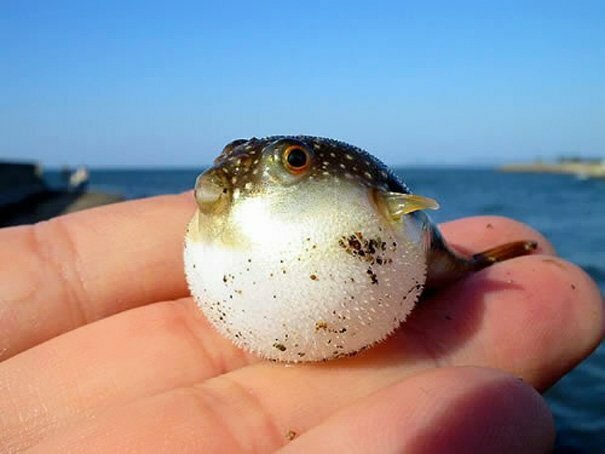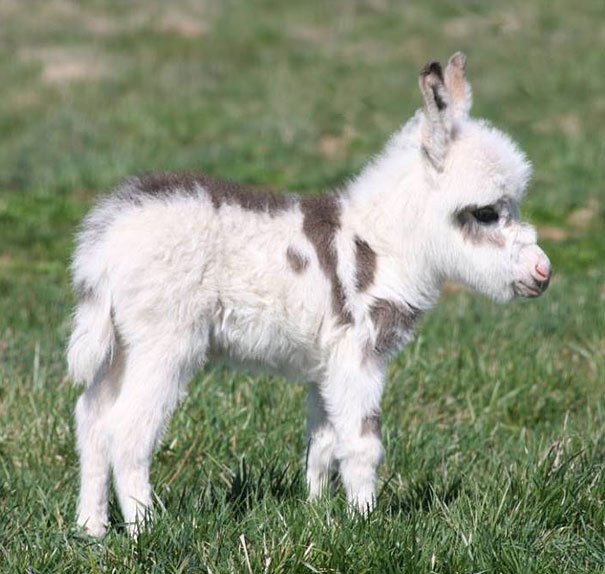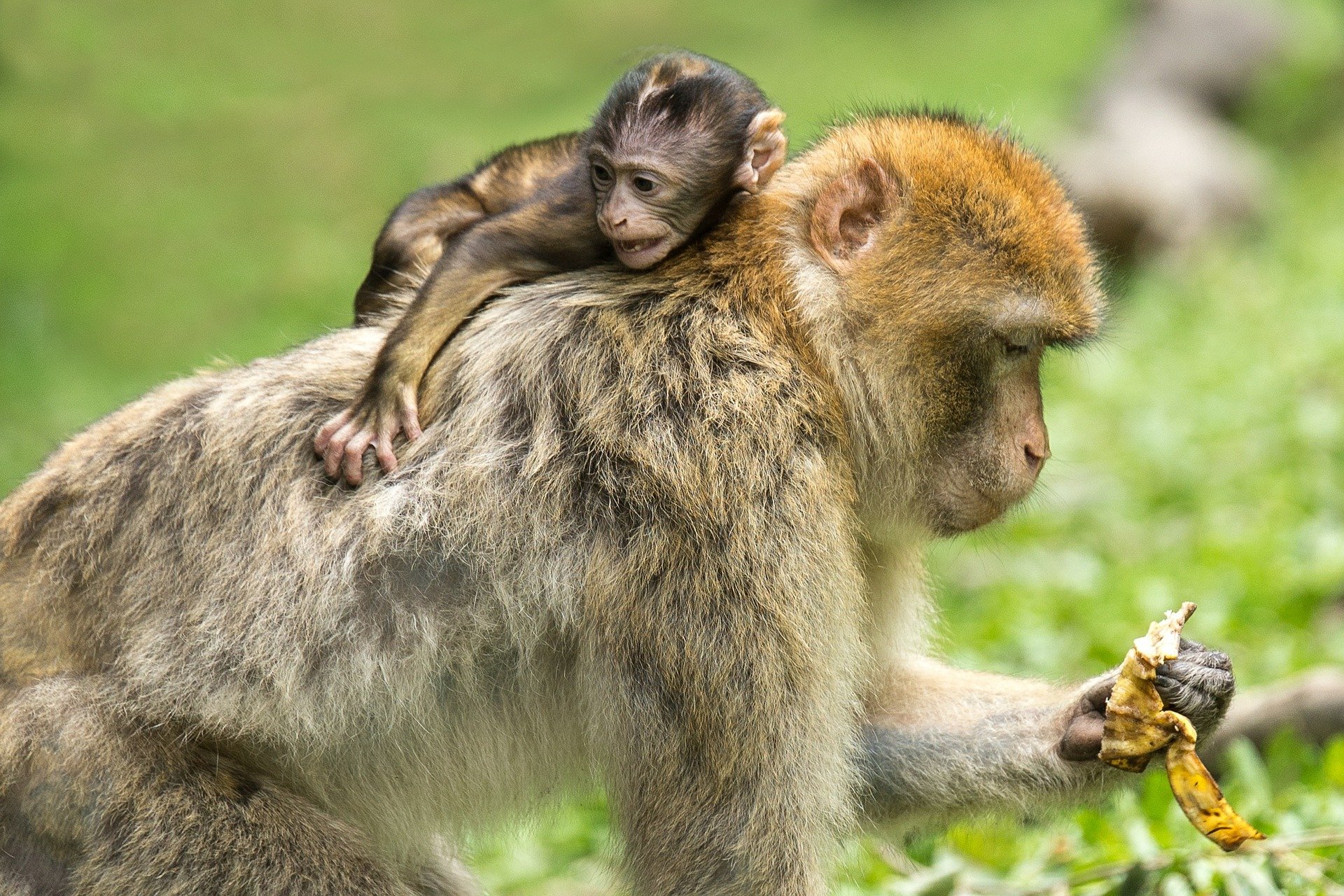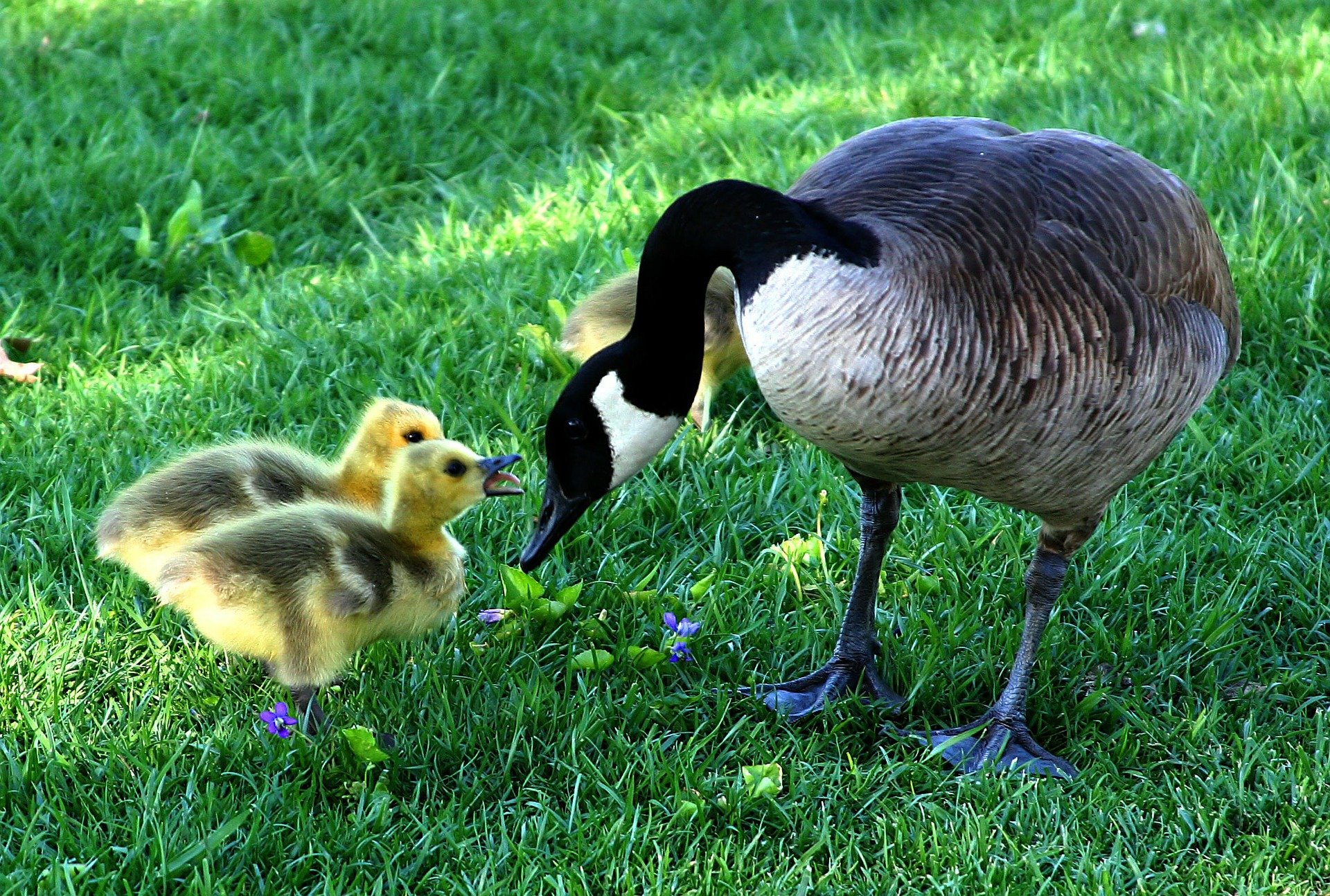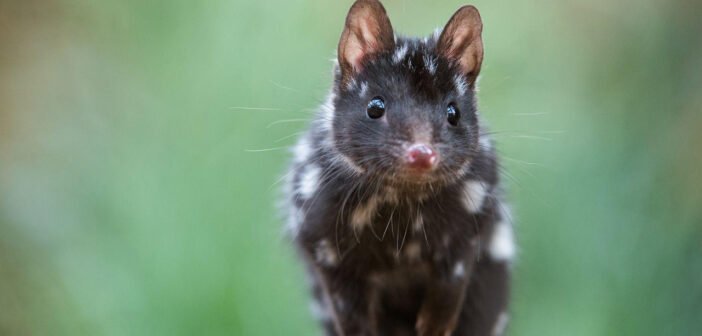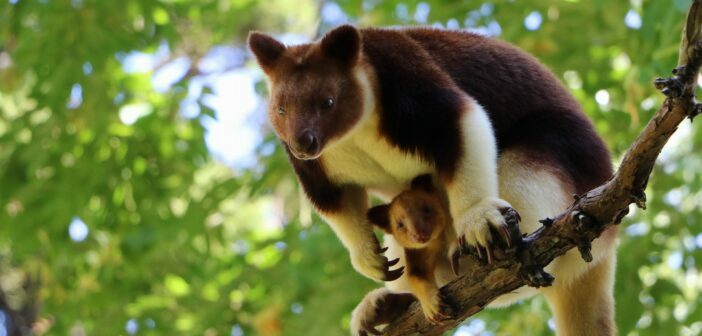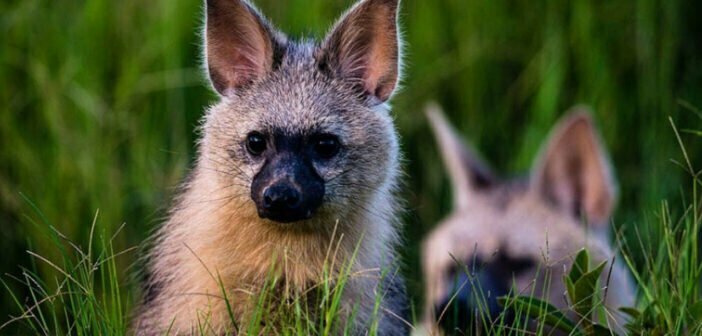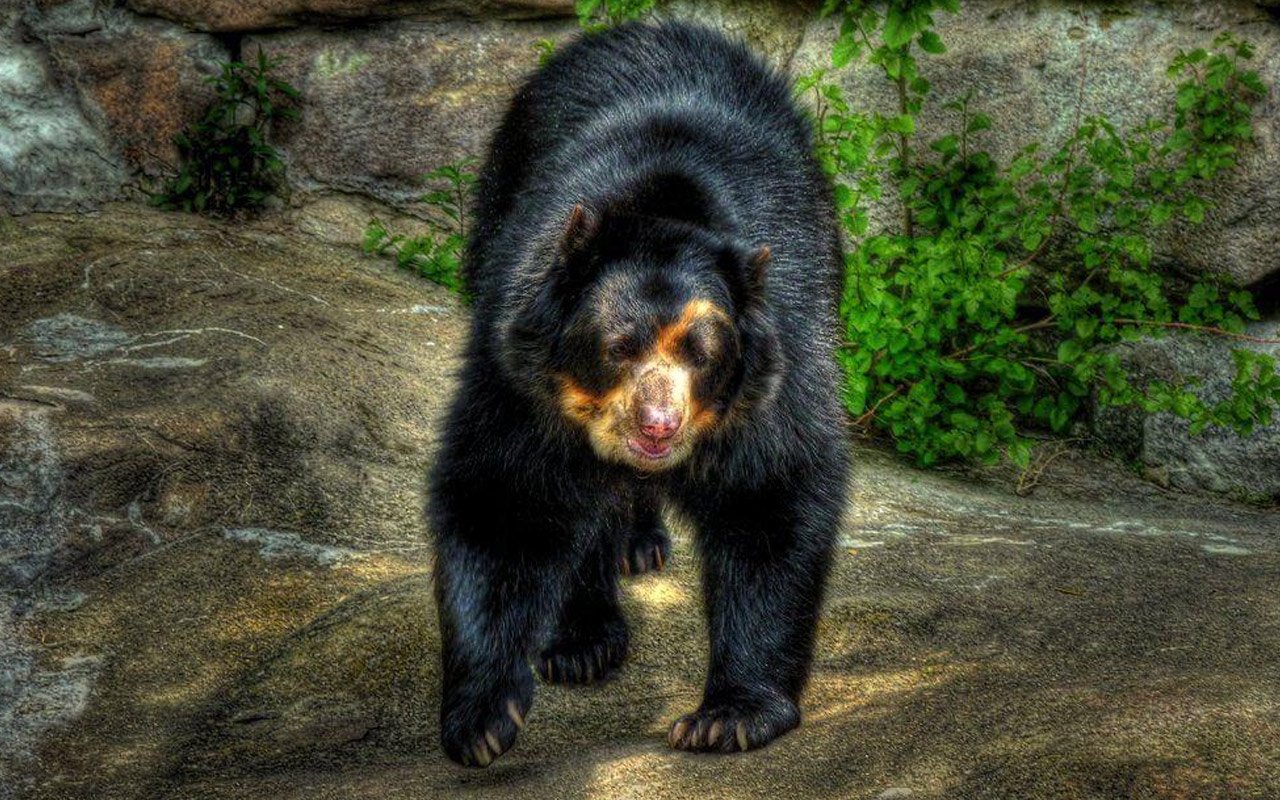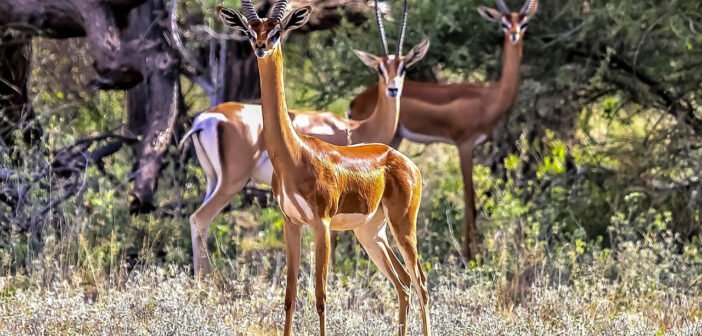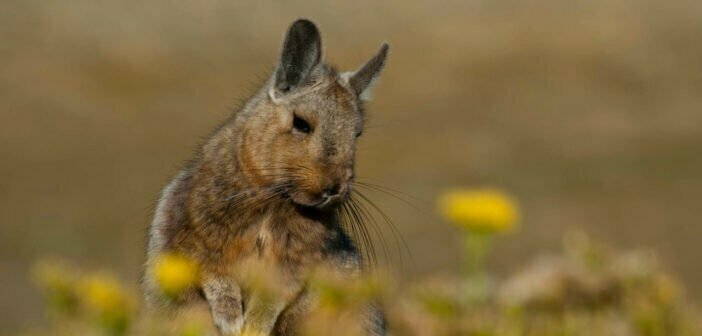Pictures of cute animals from cute pets to cute dangerous animals around the world: Cutest baby animals, how to draw cute animals…
It’s hard to find something more positive than looking at cute photos of animals. Looking at photos of cute creatures can make your day brighter, whether you’re looking for something to do in the afternoon or just to have some fun. You might not see the cutest animals depending on where they live.
We take a look at 50 adorable animals from around the globe in this list. This list is for you, whether you are interested in animals that swim, run, jump, swim or fly.
Cute Baby Animals
Although our parents might be happy to see us leave some of our baby habits behind, we know that our furry companions can just keep being babies forever.
This is how cute animals can be! Even though some might argue that human babies look cuter, here’s a list of the cutest animals we have ever seen.
Every adorable animal species is different in terms of the age it takes to reach maturity.
For example, a kitten might only be a baby animal for a year, while the elephant may take 20 years to become a mature animal.
The animals’ lives expectancy and size will also play a role. Longer lifespans usually mean that animal babies will mature more slowly.
Some of us, the amusing animals are known as humans, tend to remain in childhood all our lives.
Like us, baby animals can be curious, naive, and a little furrier, just like we. The process of learning to discern right from wrong, the best ways to survive, and how to make them happy takes time.
There are plenty of cute animal photo opportunities available if you have a camera.
Take a break to see these cute pictures of baby animals. They are full of positive vibrations and emotions.
1. Adorable Baby Deer
2. Adorable Baby Hedgehog
3. Adorable Baby Dolphin – one of the most intelligent and cutest animals
4. Adorable Baby Elephant
5. Adorable Baby Octopus
6. Adorable Baby Owl
7. Baby Puffer Fish
8. Baby Foxes
9. A Baby Fox
10. Baby Hamster
11. Baby Walrus
12. Baby Skunk
13. Baby Chinchilla
14. Baby Hippo
15. Baby Dik Dik
16. Baby Penguins
The symbol of Penguin is adaptability, dual natures, closeness to family, and spirituality. Penguin is a bird that has learned to fly through the water rather than the sky, choosing to plunge deep into the realm of dreams.
17. Baby Hawk
The hawk is an amazing symbol of freedom and flight. A hawk is a symbol of creativity. A hawk is a sign that you need to let your creativity flow when you meet one. You can express yourself through poetry, music, or any other creative talent.
18. Baby Panda
19. Baby Donkey
20. Baby Otter
21. Baby Tapir
22. Baby Hedgehogs
23. Baby Prairie Dogs
24. Bunny
25. Cute Baby Crocodile
26. Cute Kitten
27. Cutest Baby Giraffe
28. Cutest Baby Chameleon
29. Cute Baby Sloth
30. Cutest Duckling Ever
32. Cutest Ever Baby Ant Eater
33. Cutest Lamb Ever
34. Cutest Baby Seal
35. Crane Chick
36. Foal
37. Frogmouth Chicks
38. Piglet
39. Baby Koala
40. Baby Chicken
41. Baby Monkey
42. Baby Leopard
43. Baby Canada Goose
44. Rhino
45. Zebra and Elephant
50 Cute Animals
Sea Otter
Sea otters are a member of the weasel family. They are found along the North Pacific Ocean coasts. They are well-known for floating on top of the water on their backs, often within seaweed and kelp forests. In this position, they can sleep, eat and care for their young. They also cuddle together!
Sea otters are able to live up to 23 years, and they can typically weigh between 60-60 pounds. Sea otters, once almost extinct for their fur and now endangered
Margay
Margays are wild, small cats that live in the evergreen or deciduous forests of Central America and South America. They live primarily in trees, and their long, heavy tails are used for balance.
Margays are mostly nocturnal. They hunt in trees and eat small mammals, eggs, and fruit. One litter of kittens is born every two years by female margays. These magnificent cats are now endangered because margays have been hunted to their coats.
Red Panda
Red pandas are a small, tree-dwelling species that is only slightly larger than domestic cats. They are affectionate, fluffy creatures who love to snuggle up with their tails in winter. They are found mainly in the Eastern Himalayas.
Red pandas, like giant pandas, have a pseudo thumb that allows them to grab bamboo while eating. They are the last living member of the Ailuridae family.
Elephant Shrew
These small, fuzzy mammals have a playful air thanks to the long noses of elephant shrews. Elephant shrews, despite their appearances similar to mice, are not rodents. They aren’t even shrews.
They are closely related to a large family of African mammals which includes sea cows, aardvarks, and even elephants!
Elephant shrews can be found in the forests and plains of six African countries. They feed on insects and give birth three to five times each year.
Quokka
Quokkas also called short-tailed scrub wallabies or just “joeys”, are native to Australia. Their young are known as “joeys”; they live in pouches for a while until they can survive on their own like kangaroos.
Quokkas are omnivores of grasses and shrubs. They can survive up to a year without drinking water. Rottnest Island, just off the coast of Australia, is home to approximately 10,000 quokkas who love taking selfies and posing with island visitors.
Fennec Fox
Fennec Foxes have the most adorable ears of any canid, and they also have the largest ears. They live in North Africa’s deserts. They eat insects like rodents, lizards, and birds.
Fennec Foxes live in groups of 10 to 10 foxes, in dens. They spend the day there, waiting for the heat to cool down before going out hunting at night.
Klipspringer
Klipspringer is a type of small antelope found in eastern and South Africa. Their special hooves allow them to jump as high as 12 feet. Each hoof measures only a dime in diameter.
Klipspringers sleep during the hottest part of the day. They then rise from the rocky outcroppings where they call home in early mornings and late evenings to graze on fruits, leaves, and flowers.
Japanese Weasel
Japanese weasels can be found in mountains and forests near water sources on the Japanese islands Honshu, Kyushu, and Shikoku. They live in hollow logs and trees, and they are territorial. They can sometimes be found in other habitats like grasslands and small towns, but they prefer to stay away from densely populated areas.
Japanese weasels are nocturnal and solitary animals that can be used to control rodent populations and mice.
Pika
This mountain-dwelling herbivore has adapted to live in hostile environments. Pikas are tiny and prefer to live in colonies, which provide protection on the steep, treeless slopes that they call home.
Pikas are protected from the cold by living in their dens. Pikas collect and dry wildflowers and grasses in the summer, and keep them warm in their dens during winter.
Quoll
Quolls are tree-dwelling marsupials from Australia and New Guinea. They are easily identifiable with their long tails and spotted hairs.
They are carnivores and will eat small mammals, carrion, or any other pieces of meat that they can get their hands on.
Excepting dingos and quolls, the largest carnivore of the Australian mainland is now the quoll. The smallest quoll species weighs just over two pounds. The largest weighs in at 11 pounds.
Capybara
Capybaras, the largest rodents of all time, are known as the “Big Cat.” They are closely related to guineapigs but are also semi-aquatic. They’re great swimmers like beavers. To allow capybaras to thrive in wetlands, their toes are partially webbed.
Capybaras, like all rodents, have teeth that keep growing. To prevent this, they eat fibrous plants and hard grasses to keep them healthy.
This allows capybaras to have an unappetizing behavior: they eat their own feces each day, which allows them the ability to digest the protein-rich fibers in the plants they consume twice.
Patagonian Mara
The Patagonian Mara, a rodent similar to a rabbit, is found in southern Argentina. They hop like rabbits and can gallop or “stot” which involves straight-up jumping on all fours.
Maras travel with mated partners and stop to raise their young in burrows that can hold up to 15 mated couples. Mara males guard their families aggressively and take care of the young while the women look after them.
Mangalitsa
These fuzzy domesticated pigs look like a cross of sheep and pigs. The Mangalitsa, an indigenous pig of Hungary, is a heritage pig and is kept for their meat. The only remaining pig breed with a long coat is Mangalitsa.
The piglets of the Mangalitsa family are almost extinct now that they are about 60,000 each year.
Tarsier
Tarsiers are a type of primate that can be easily identified by their large, distinctive eyes. They live in Malaysia, Indonesia, and the Philippines. Tarsiers have eyes so big that their brains can sometimes exceed their eyes. They can rotate their heads 180° in any direction, much like owls.
As they climb trees and vines looking for their next meal, their long fingers help them. Tarsiers only eat meat and prefer small animals such as frogs, birds, snakes, and lizards.
Axolotl
Axolotls can be described as aquatic salamanders that have distinctive, feathery gills on either side of the head. They retain their larval features, and their affinity for water, unlike other types of salamanders.
Axolotls, which are endangered in the wild, are being affected by pollution, fishing, and the pet trade. They can grow up to 1 foot in length and can live up 15 years in captivity.
Tawny the frogmouth

Tawny and Tawny frogmouths look very similar to owls. However, they are not owls. They are nocturnal and share a similar facial structure as owls. However, they lack sharp talons or strong feet like owls.
They are common throughout Australia. They live in trees and use their exceptional camouflage to hide during the day.
Leafy sea dragon
The leafy sea dragons retain their plant-like appearance because they can blend in with the underwater plant life. They look a lot like seahorses, but they are closely related to pipefish.
The fertilized eggs are cared for by male sea dragons like both pipefish and seahorses. They transport the eggs under their tails where they provide oxygen through a special organ.
Thirteen-lined ground squirrel
These striped squirrels are a hybrid of a chipmunk squirrel and a squirrel. They are just like all other squirrel types, but they have 13 distinct stripes that distinguish them from the rest. These stripes include seven dark stripes and six lighter stripes.
Thirteen-lined groundsquirts are also called thirteen liners. They enjoy warm days and prefer a diet that includes seeds, caterpillars grasshoppers, crickets, insects, and sometimes a small mammal such as a mouse or shrew. Thirteen-liners enjoy eating cicadas.
Long-tailed tit
The European long-tailed tort is found in Europe. It constructs its nests out of feathers and moss, as well as lichen and spider egg cocoons. Each nest contains approximately 6,000 parts.
This insectivore eats larvae of moths, butterflies, and other insects in the woods where it lives. The distinctive triple-trill call can identify it.
Chevrotain
The chevrotains, also called mouse-deer in some parts of the world, are the smallest hoofed mammals. The African species of chevrotain is about 35 pounds in weight at their largest. The Asian species weighs in at 18 pounds.
Chevrotains lack the deer antlers and have canines that are longer than their counterparts. These little mammals aren’t agile because of their short, skinny legs. Chevrotains are known to submerge their bodies in water until they can defeat predators.
Binturong
Binturongs also goes by the name bearcats. Binturongs aren’t closely related to cats and bears but can purr and bathe themselves, just like cats. Their scent is reminiscent of buttered popcorn and they mark their territory.
Binturongs can be found in the forests of Borneo, Bangladesh, Borneo, the Philippines, and northeast India. They have prehensile tails similar to monkeys which allow them to hang from limbs.
Slow loris
These cute nocturnal primates look innocent with big eyes and furry heads but don’t be fooled. They bite with venomous flesh-rotting venom.
Slow lorises have a particularly cruel defense mechanism. However, they rarely use their poison against predators and certainly not against unsuspecting human beings.
To protect their territory, they keep their venomous bite to themselves and other slow lorises.
Pygmy hippopotamus
Although Pygmy hippopotamuses resemble regular-sized hippos, there are many differences. They are smaller than regular hippos, have fewer teeth, and can move slower underwater. Their skin is also more delicate, so they have pink fluid.
These herbivores are usually shy and will flee rather than fight. Although they are typically single, they may live in small groups of friends or with mates.
Arctic Fox
Bright white coats help Arctic foxes blend in with their snowy, wind-whipped environment. Arctic foxes, which are carnivores that rely on small animals for survival, love lemmings.
In order to keep warm in the cold, Arctic Foxes sleep under their tails. Arctic foxes are also the only canid to have fur on their feet, which helps to explain why they don’t start to shiver until temperatures hit -94 degrees Fahrenheit.
Sand cat
These desert-dwelling, desert-dwelling cats can be found in Syria, Iran Sudan, and Egypt as well as in other parts of the Arabian Peninsula. They are excellent at digging. This is how they build their burrows and catch small rodents. Their large ears are used to detect the faint squeaks beneath the sand, which is a sure sign of their cuteness.
They can live for up to a week without water and are primarily nocturnal, in order not to be subjected to the heat of the desert during the day.
Pygmy Owl

Despite their diminutive stature (most of them are the size of sparrows), pygmy birds can take on prey up to three times their size, including chickens.
Pygmy owls primarily eat songbirds. This is why you will often see them being attacked and protected by songbirds. This is a good way to find a Pygmy Owl. You might see songbirds in a large area and they may be hunting this unorthodox predator.
Bee hummingbird
The bee-hummingbird is the world’s smallest living bird. They measure just 2.24 inches in height! Their eggs are as big as a coffee bean.
These vibrant little birds come in vibrant colors of blue, orange, yellow, and yellow. They make a buzzing sound as they fly and their wings mimic the buzzing of a bee.
Bee hummingbirds, which can visit as many as 1,500 flowers each day, are very productive little creatures.
Tree kangaroo
Tree kangaroos are found in the rainforests of Papua New Guinea and Indonesia. There are 14 types of tree kangaroos. Each one has short legs and strong forearms, which allow them to climb.
They look something like a cross between a lemur & a kangaroo, and love to munch on plants.
Tree kangaroos are considered to be endangered because of the destruction of their natural habitat.
Pygmy goat
There are many types of pygmy got to choose from, all with small statures. Pygmy goats typically weigh between 30 to 80 pounds and are no higher than 3 feet in height.
Many pygmy goats are prized for their thick fur and ability to clear brush from weeds and grass by grazing. Pygmy goats are sweet and often kept as pets.
Aardwolf
Aardwolves resemble smaller, striped hyenas. They are shy and nocturnal. The African Aardwolf is a native species. Afrikaans for “earth-wolf” is the name of the “aardwolf”.
Aardwolves are known for their sticky tongues, which allows them to enjoy termites as their favorite food.
These insectivores choose termites over all other types of food. In order to get the best of their favorite cuisine, they keep their pups with them during the rainy seasons when termites are most active.
Beautiful Raccoon dog
Raccoon dogs are native to Asia. They are very closely related to foxes, despite being called raccoon dogs. They enjoy climbing trees and eating frogs (grouse), fruits, and vegetables.
Racoon dogs, which are native to Europe, are considered invading species. They are the only canids capable of hibernating.
American minks
American minks are semiaquatic. They have waterproof fur that allows them to swim fast and dry quickly. This trait has unfortunately been exploited often by the fur industry.
American minks look a lot like ferrets and weasels. Mink life near water bodies, where they hunt rabbits. They sound like cats and they purr and hiss.
Gecko
Gekkota, which includes more than 1,000 species of lizards, is often called geckos. These tiny, carnivorous, small lizards are kept as pets. They eat insects and have adhesive pads that stick to their feet.
Geckos are fast, so they can escape predators. They can regenerate their tails later and also detach the tails of predators. Geckos can be heard barking and chirping, which is a characteristic that sets them apart from other lizards.
Miniature pigs
Miniature pigs have become increasingly popular in recent years as pets. It’s easy for anyone to understand why.
Experts warn that while these sweet-mannered animals may be small when young, they can still grow to a maximum of 100 pounds as adults. This means that many miniature pig owners end up with a lot more than what they expected. A miniature pig should weigh in at around 70 pounds.
To comfort people in nursing homes, schools, or hospitals, miniature pigs can sometimes be trained to act as therapy animals.
Cuttlefish
Cuttlefish are cephalopods that look like octopi, squids, and have an inner shell called a cuttlebone. The cuttlefish was created 21 million years ago. They are believed to have shared an ancestral lineage with ancient land animals.
Some cuttlefish species have toxic venoms that allow them to repel predators. Many produce ink which has been used both as a dye and also as medicine. There are more than 120 species of cuttlefish. They all have the same elongated shape.
The Quetzal Bird
Five species of birds are known as quetzals. They live in the neotropics, South and Central America. Quetzals can be colorful and have tail feathers that splay out behind their wings as they fly. The tail feathers of male quetzals can measure up to one meter.
Quetzals are skilled hunters and omnivores. They eat frogs lizards, insects, and snails. They nest within trees in holes that they make with their beaks, and they live near the forest canopy.
Okapi
The okapi is the only living relative to the giraffe. It is a hybrid of a deer and a zebra.
The okapi’s tall ears and upright posture allow it to hear faint noises. Like the giraffes, it also has prehensile teeth that allow it to extract leaves and buds from branches.
Okapi lives in the rainforests of the Democratic Republic of Congo and is considered to be most at home there.
Spectacled bear
The spectacled bear, also known as the Andean Bear, has a distinct, tan, or white pattern on their faces that looks almost like a pair of glasses. It is the only South American species of bear.
Spectacled bears measure in at two to three-foot at the shoulder. They are hard to study as they are shy and wary about humans. They consume more than 300 kinds of plants, and 20 types of animals.
Gerenuk
The name “gerenuk”, which is Somali for “giraffe-necked”, can be easily understood. These gazelles, which have long necks, are native to the Horn of Africa and other parts of East Africa.
Their heads are very small for their bodies but their unique proportions make them able to stand on their hind feet to eat high shrubs and trees.
Gerenuk males have lyre-shaped, horns which add to their whimsical appearance.
Tamandua
Tamanduas, a type of Anteater, is much smaller than most anteaters. They only weigh 5 to 17 lbs. Tamanduas have a body temperature that is lower than any other land mammal.
Despite their adorable faces, tamanduas might be an animal you don’t want to touch. They release a smell four times stronger than the smell of skunk urine when threatened.
Viscacha
Although it may appear like a cuddly, cuddly rabbit viscacha is actually a type of vizcacha. Viscachas can be described as a type of chinchilla. The Chincillidae family is known for their bushy tails that are long and bushy.
The five species of viscacha can be found in South America and Western South America. They are usually found in colonies and weigh an average of 3.5 pounds.
Tamarin
Tamarin monkeys are about the same size and shape as squirrels. Sometimes they have long, white, mustache-like faces. They are found in the tropical rainforests where they swing among branches looking for fruit, insects, and bird eggs.
With its leonine mane, the golden lion tamarin is one of the most easily recognized types. The golden lion tamarin was once critically endangered but, after conservation efforts, it was reclassified as endangered in 2003.
Sugar glider
Sugar gliders, like kangaroos, are marsupials. They are often kept in the United States as pets, but they are not like kangaroos.
Sugar gliders can be social animals and should be kept together with other sugar gliders when they are kept as pets.
In nature, they live in colonies that can contain up to seven adults and their children, known as joeys.
Sugar gliders have a thin membrane between their wrists & their ankles that allows them “glide” from one tree to the next. They only weigh 3 to 5 ounces.
Platypus
Monotreme platypus, a rare type of mammal, is known to lay eggs. Platypuses also have venomous traits, which is another rare trait for mammals. Male platypuses release the venom through their legs from a gland.
Platypuses only live in Australia and are hard to study because of their mysterious nature. Because of this, we still have a lot to learn about them and their habits.
Tasmanian Devil
The Looney Toons character with the same name, the Tasmanian Devil, is another interesting Australian animal.
A marsupial of the Tasmanian devil, this marsupial has a frightening reputation. They are well-known for their fearsome reputation.
Tasmanian devils are considered a protected species. They are thought to have vanished from the mainland approximately 400 years ago.
Culpeo
Culpeos hunt all kinds of prey and are considered opportunistic predators. Fuegian dogs are a canid species that was once domesticated by culpeos. Culpeos can be considered endangered.
Verreaux’s Sifaka
Verreaux’s Sifaka is a species of lemur that is only found in Madagascar. It balances by using its long tail to move from tree to tree. Sifakas are well-adapted to life in the treetops, but they have trouble walking on the ground. They can only hope.
Verreaux’s Sifakas sunbathe and live in troop formations, which can have between 2 and 12 adults. Verreaux’s Sifakas are now critically endangered.
Snowshow Hare
In North America, snowshoe Hares are found in the boreal forests. Their fur colors change throughout the year from brownish to white, which helps them camouflage in their environment.
The unique shape and size of the hare’s foot are what give it its nickname. This allows the hare to hop on top of the snow without being pushed in.
Snowshoe hares are omnivores of plants and woody plant growth. In winter, they will eat only twigs and bark.
Adorable Animals That Are Actually Deadly
It is impossible to judge a book’s cover by its cover, especially out in nature. Some of the most terrifying-looking animals, like bats, garden snakes, and cellar spiders, can actually be harmless.
While other animals are commonly thought to be friendly and adorable, they are among the most deadly. Even the most adorable creatures, which we assume to be docile, can still cause harm to wildlife and humans.
Consider the dolphin. While these intelligent mammals make great swimming partners on vacations to the Caribbean, they are also known to be incredibly cruel to their offspring.
The domestic cat is responsible for more than 12 million kills every year, and that’s just in United State. You may regret approaching a gentle, kind-hearted creature if their name is below.
Cute dangerous animals: Here is a list of 30+ most Vicious Animals that look cute
Pufferfish
The marine species of pufferfish is quite dangerous, despite the fact that they made a funny appearance in Finding Nemo. Almost all pufferfish contain tetrodotoxin, a substance that makes them foul tasting and often lethal to fish. To humans, tetrodotoxin is deadly, up to 1,200 times more poisonous than cyanide. There is enough toxin in one pufferfish to kill 30 adult humans.
Hippopotamus
Although you might hope or believe that the hippopotamus’s large size will slow it, that is not the truth. These animals can run faster and attack any object that is not predictable. The BBC reports that nearly 500 people are killed each year by them in Africa.
Slow Loris
It is hard to resist the cuddly look and gentle demeanor of slow loris. But you should try if you come across one. These vicious mammals look like baby Ewoks but are quite venomous. If they feel attacked they can (and will!) mix their toxins in their saliva and fur to attack predators.
Blue-Ringed Octopus
Small packages can contain deadly things. The blue-ringed Octopus is an example of this. It is smaller than most candy bars, but it contains venom 1000 times more powerful than cyanide. And it can kill 26 people in minutes.
Polar Bear
The director of the Government of Nunavut’s protective service branch, Ed Zebedee said that polar bears are the only animals that can stalk humans and eat them.
While polar bears tend to be kept away from humans, the vast majority of ice has prevented them from attacking people most of the time. However, at least 73 attacks have been reported in the past 130 years.
Leopard Seal
While people often think of leopard seals as cute, “ocean puppies,” they are much more. With a length of up to 10 feet, the leopard seal is the third-largest in the world. Photographers and scientists who come too close to these animals risk getting hurt.
Domestic Cats
Although we don’t think your cat will cause your death, they may kill your garden and other animals. According to Nature, cats kill an average of 2.4bn birds and 12.3bn mammals each year in the United States.
If these numbers were human lives, domestic cats might wipe out the entire human race every year twice. If any of the native mammals, such as the chipmunk and the shrew, become extinct we will know who to blame.
Raccoon
Raccoons are generally harmless to humans. However, the parasites they carry can cause serious health problems. You’ve probably heard of rabies and mites.
But these parasite-eating mammals also carry other more rare, dangerous diseases than you may have (tularemia, leptospirosis, and toxocariasis- which, by the way, are just as frightening as they sound).
It’s unlikely that everyone who comes in contact with a raccoon will become infected. However, it’s worth not taking the chance.
Kangaroo
Kangaroos do not attack humans directly but they can be vicious towards dogs which can cause conflict between dog owners, kangaroos, and their human companions. You may recall the viral video in which a man punched a kangaroo’s face to save his dog.
Dingo
Dingo attacks against wildlife in Australia are so common, a Dingo Fence was built in the late 1800s to keep them away. While attacks on humans may be less frequent, they are still quite common.
According to an Australian Broadcasting Corporation report from last month, there have been instances of them.
Wolverine
No, Hugh Jackman is not the obviously dangerous Wolverine. We are referring to the character’s “unmatched” source material, an elusive weasel. Their name is derived from the German word “devours Much” which means that they hunt everything and everyone, including humans.
Chimpanzee
They are beautiful and have a lot of DNA. However, you might not want to approach them blindly. Michael Wilson, associate professor of Anthropology at the University of Minnesota said that chimpanzees have a natural tendency to be violent. Wilson and his colleagues discovered that animal is naturally aggressive, with a tendency to attack both their own species as well as other species.
Duck-Billed Platypus
The duck-billed platypus is one of only a few mammals capable of laying eggs. It’s also one of the few mammals that are venomous. A sting from males can feel like “hundreds upon hornets”, and victims may be incapacitated for weeks.
Mute Swan
The Mute Swans are territorial about their nests. Should you encroach on their territory–accidentally or otherwise–a mute swan won’t hesitate to attack you with its lengthy wings. Their muscles are strong, so don’t be surprised if they send you to the hospital with broken bones, bruises, and other injuries.
Panda Bear
Panda bears, who are almost exclusively herbivores that eat bamboo, need a very high bite force to cut through bamboo stems. They will attack humans even though they don’t want the flesh to eat, and their puncture wounds can sometimes be fatal.
Moose
Although moose may seem adorable from far away, they are very affectionate and friendly creatures that you might want to hug. You’ll soon realize, however, that this “lovable”, seven-foot-tall beast can strike at you with one swift blow. CBS News wildlife biologist Jessy Coltrane said, “Imagine that every moose stands in the middle of the trails with a loaded firearm and is a serial killer.” Given that moose are more dangerous than bears each year, it is worth listening to her advice.
Elephant
An elephant can be dangerous if you’ve ever seen it in person. The elephant, despite being depicted in movies like Dumbo as a gentle giant is actually quite agitated. Due to its size, it only needs to trample on whatever is bothering it to solve the problem (like the 500 people it kills each and every year).
Tasmanian Devil
The Tasmanian devil is known for launching into an angry fit, whether they are protecting their family, fighting for food, or feeling threatened. The “devil”-like displays of the Australian marsupial is actually what gave it its name. If you are ever near one, get out of the way as soon as possible.
Indonesia Komodo Dragon
The Komodo dragon can’t fly or breathe fire, unlike the mythic beasts with which it is named. However, it does have some superpowers. Its saliva can be so deadly that any animal that comes in contact with it is likely to die within 24 hours. You don’t need to inhale fire from spit so powerful.
Lion
While lions look adorable in their cages at zoos, it is not a good idea to get too close. The king of the jungle is known for his sharp claws and hunting skills. It has been responsible for killing around 100 humans each year.
Wolf
Dogs, wolves, and their common ancestors share a common ancestor. Wolfs won’t attack humans unless provoked. However, wolves have the potential of causing rabies through their sharp fangs.
Leopard
Leopards are more dangerous than lions due to their unpredictable behavior and exceptional hunting skills. Tata Institute of Fundamental research claims that leopards are responsible in certain parts of India for more human deaths than any other large carnivore.
Rhinocerous
Rhinoceroses will avoid any contact with humans. If they encounter humans, however, they can charge – especially if it’s protecting their young. The rhinoceros’ notoriously bad vision means it can charge at almost anything that attempts to intrude on its territory.
Rat
Black Plague is an example of the dangers posed by rats. This pandemic caused the death of around 200 million people. It was spread by oriental rat fleas and the aid of the black rats.
Dolphin
Dolphins may be adorable while on vacation in Cancun. But, it’s not so cute when they kill their own children. Just imagine how these marine mammals could kill their own offspring.
Deer
While deer are the primary carriers of disease-carrying insects, it’s not the only reason they make the top ten most deadly animals. The Centers for Disease Control and Prevention have found that these creatures are responsible for 120 deaths annually, largely due to their involvement in car accidents. For comparison, sharks cause only one death per year.
Anteater
The claws of an anteater measure four inches. They are capable of taking on jaguars or pumas. If a predatory creature like the puma is afraid of the anteater then it’s safe for us humans to be too.
Stingray
In 2006, Steve Irwin will be a familiar name to many. He was famously killed by stingrays. Although the stingrays at the aquarium are completely harmless, their stingers are gone. Wild stingrays, however, are still very dangerous.
Dog
Canines have been kept in Western hemisphere homes for centuries by humans who have treated them like family. Dog attacks remain common despite all this, or maybe because of the close proximity. Between 1982 and 2013, 466 dog-related deaths were reported in the United States.

Poison Dart Frog
The poison dart frog is one of the most deadly animals on the planet. National Geographic states that this colorful creature can hold enough poison to kill 20,000 mice. That kind of toxicity is not something you want. Want to learn more about the animal kingdom
Hyena
The Lion King’s depictions of hyenas aren’t exaggerated. They are much smaller than the Mammalia members, but they have the ability to eat human flesh, which has earned them the title of “man-eater”.
Beaver
Beavers can be admired from afar. However, be careful not too close. While the rodent doesn’t seem to be violent or aggressive, they will still use their sharp teeth to protect themselves. A fisherman tried to capture a photo of a beaver close-up in 2013 but was attacked and killed.








